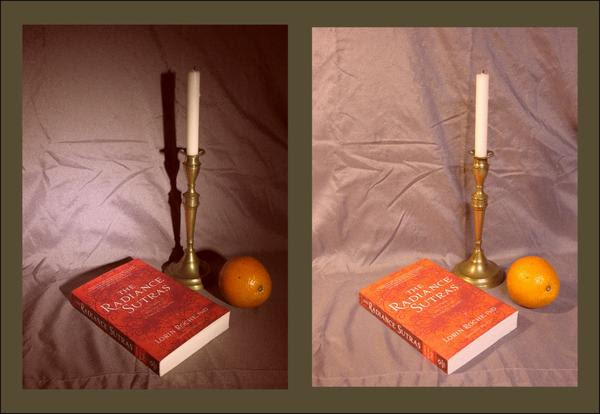How do you paint a tree? That's a generic question painting teachers get all the time. Books are written and videos made on How To Paint a--(You name it.)
Three points:
- To memorize a formula is tedious and affords you only one way of rendering an image
- If you learn to paint by formulas, you will not be able to paint what your eyes are perceiving. The formula will blind you.
- If you are not painting your own perception, but instead are depending upon a formula to render an image, you greatly thwart your individual expression and style.
When judging art shows, I have seen many skillful paintings that did not make visual sense because the artist was painting by formula rather than from perception. Below is a photo typical of what can happen. Do you see the discrepancies?
An artist can be so intent on describing each individual image that he or she will not notice the effects of the light source. Notice that the cast shadow from the orange is from one light source while the cast shadow from the candlestick is from another. Also, the light on the orange is more dispersed than that cast on the candlestick
.
I used the two photos above to construct our first picture. The photo on the left shows a more focused light source coming from the right. The one on the right shows a brighter, more dispersed light source coming from the left. Each photo is a different interpretation of the still life, but within each all images are in context with the light source. We can show that when we paint from our perception rather than a formula.
Where an image is located, its relationship to other images, the artist's vantage point, the kind of and direction of the light source--all these influence how you perceive images. No formula will interpret that, but your perception will.


No comments:
Post a Comment
I welcome your comments.